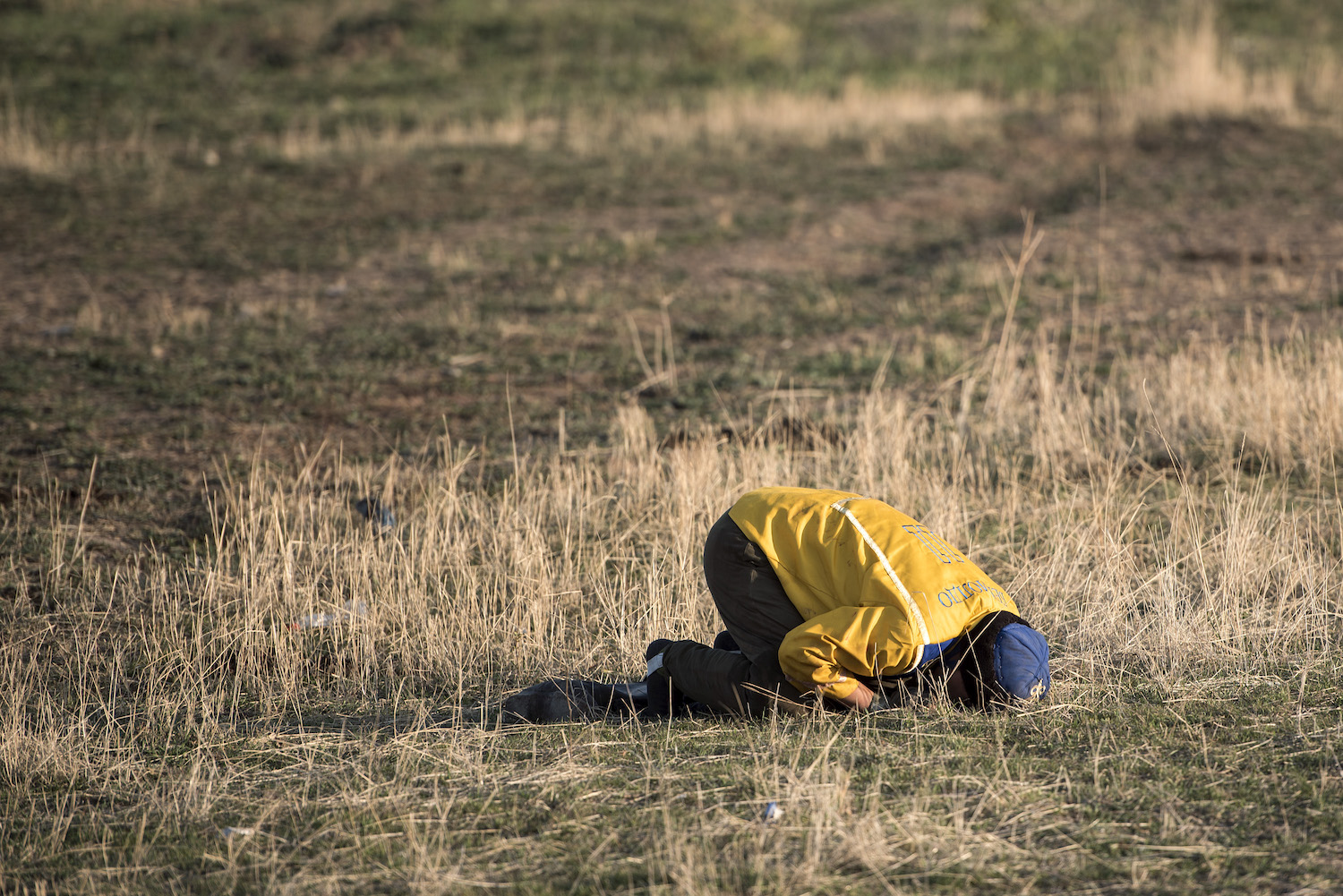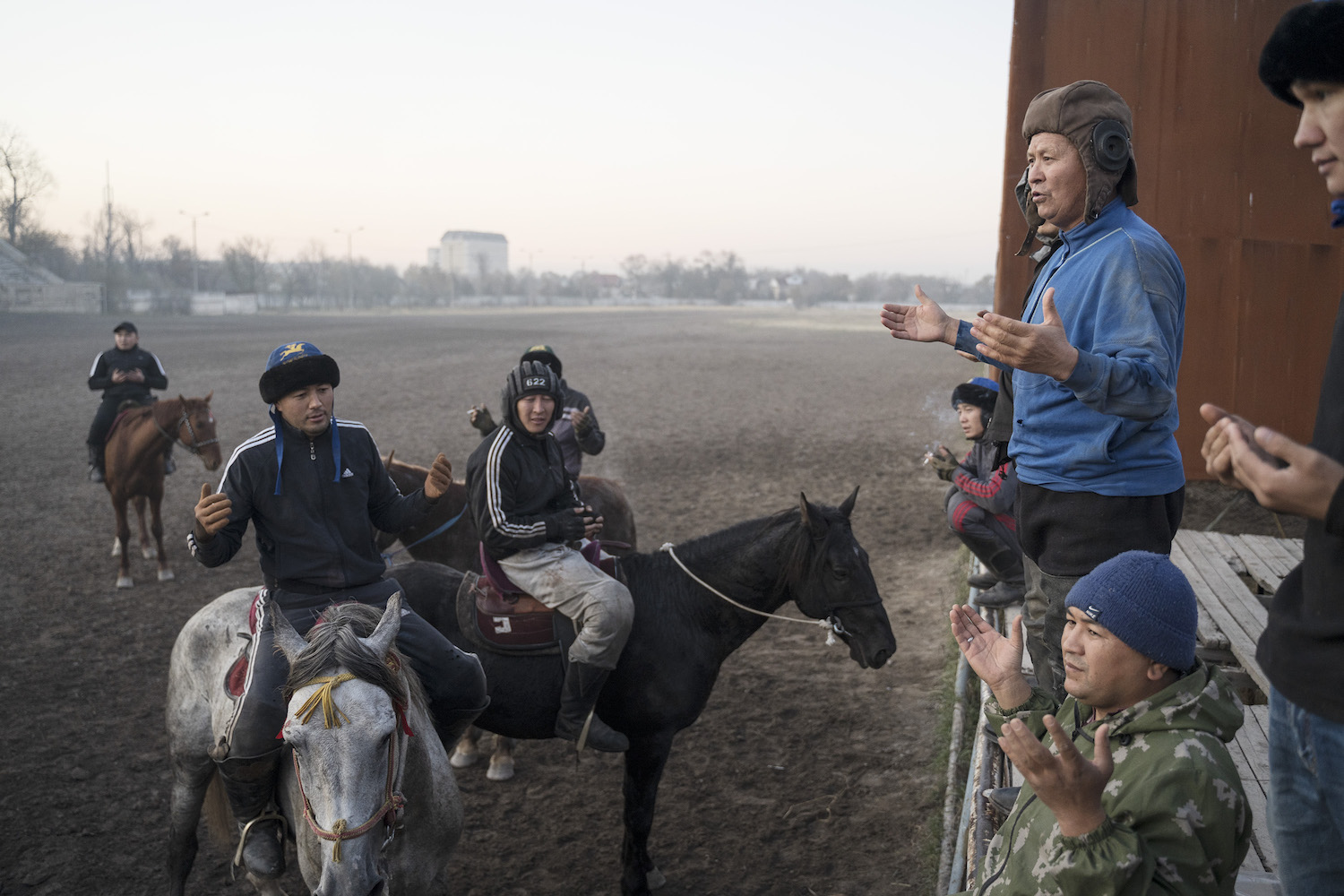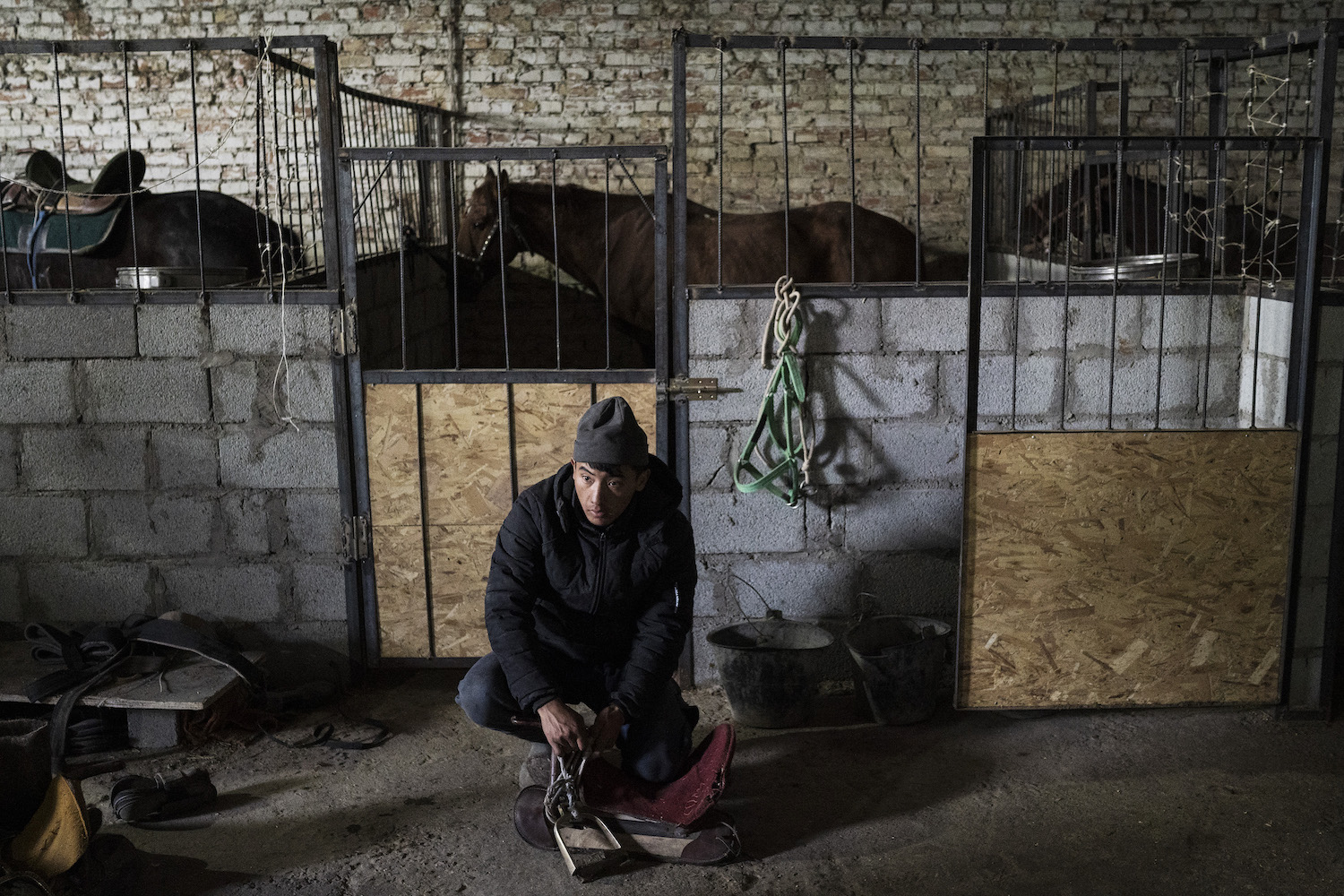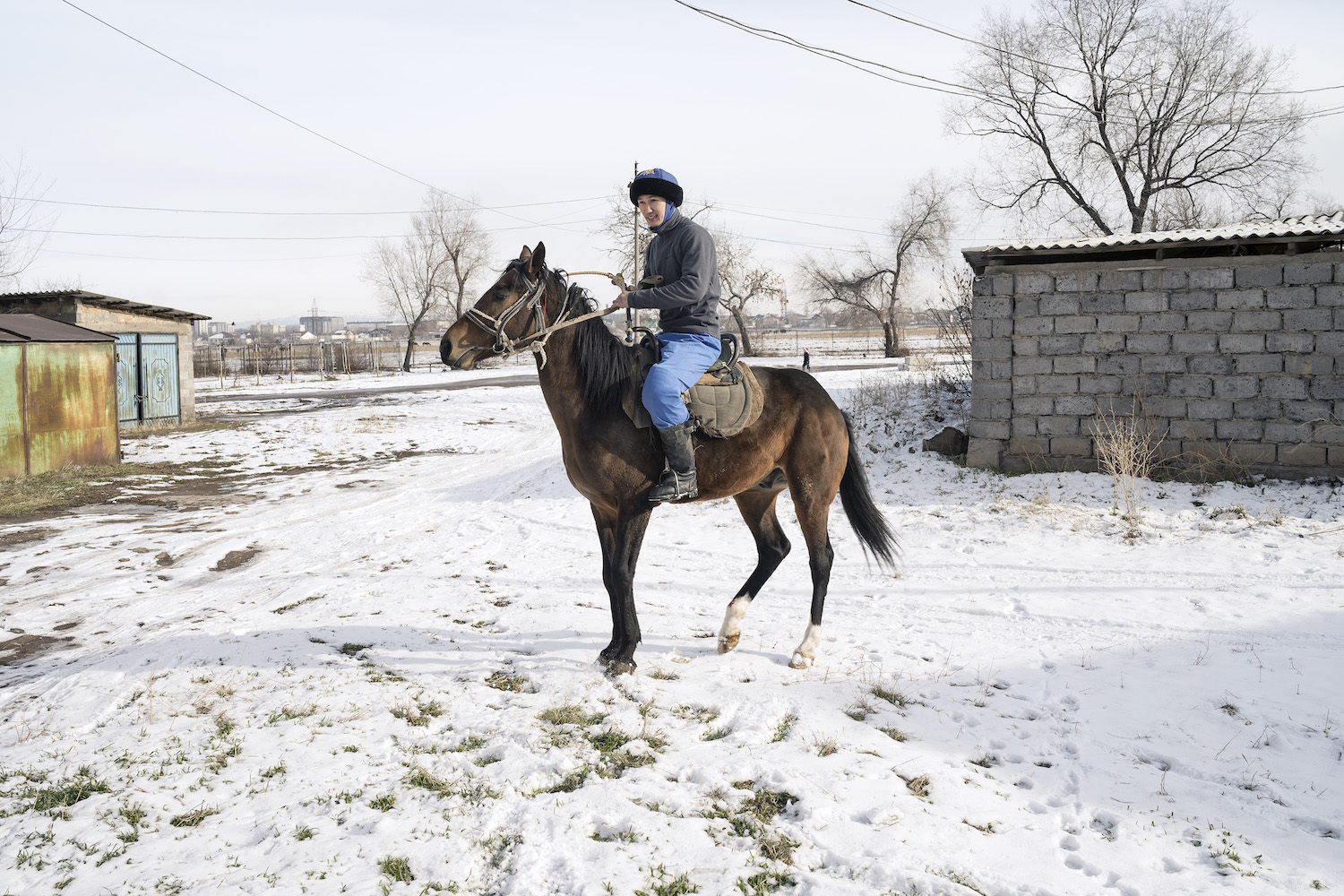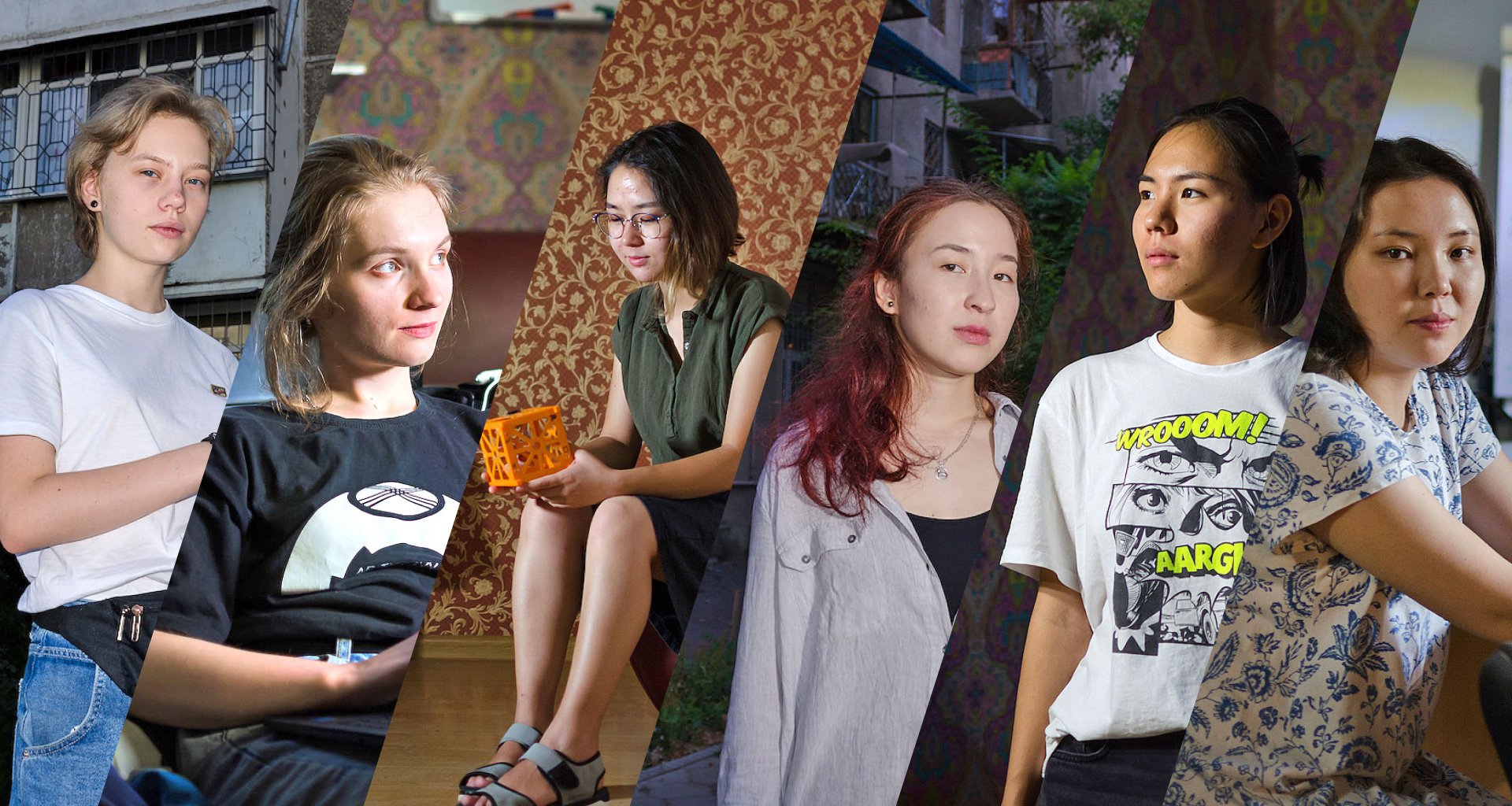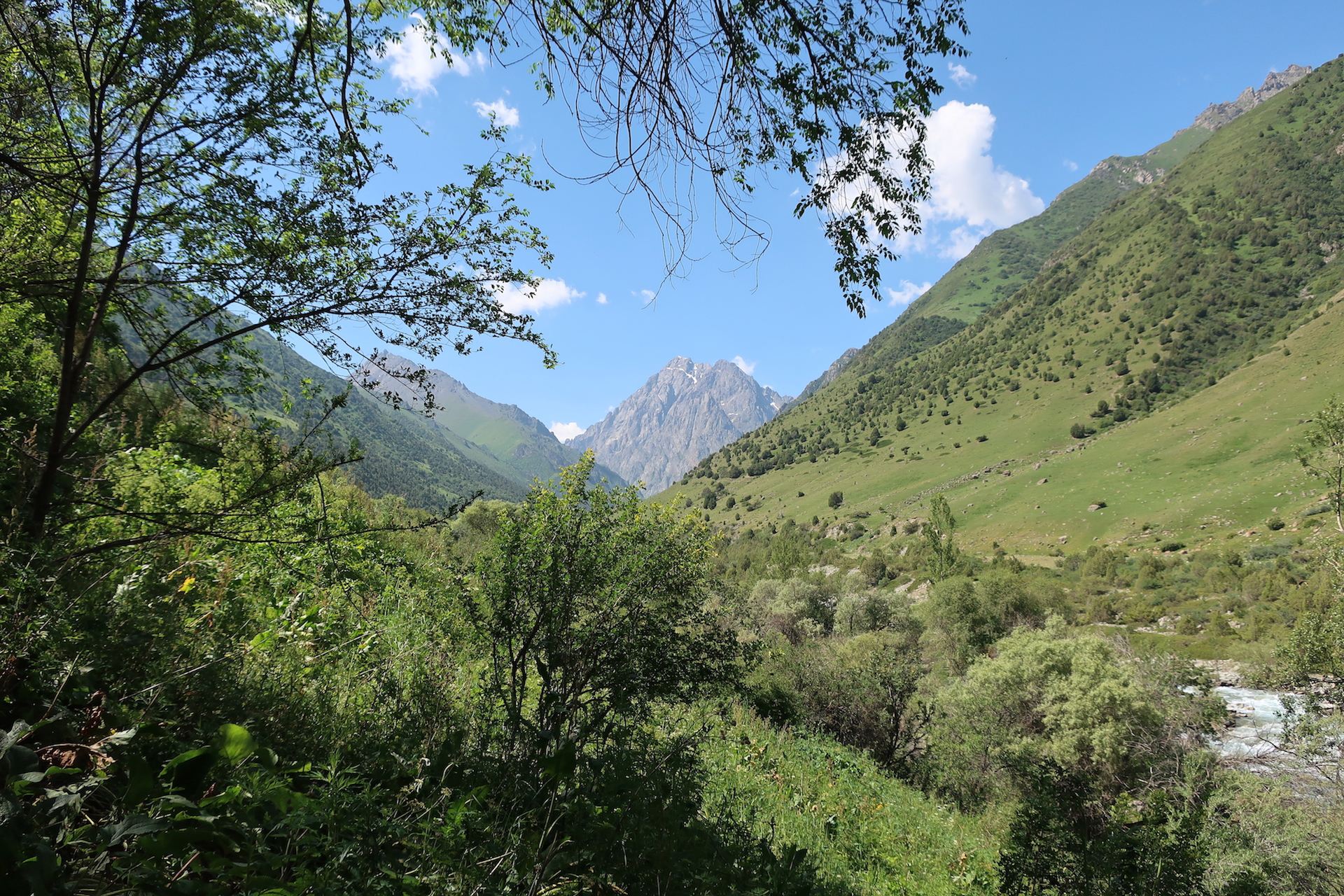Letter from a kok boru match in Kyrgyzstan: where an ancient sport meets modern times
Kok boru is an ancient Kyrgyz sport played on horseback with the carcass of a goat. But in a world where many old traditions are dying out for good, kok boru remains more popular than football — and has even undergone a revival.
As the players ready themselves — pulling on a ragtag combination of jerseys, riding boots, beanies, and traditional Kyrgyz caps — two men tie a goat by its feet and lay it on its side.
We’re behind the stables of a Soviet-era hippodrome in Bishkek, Kyrgyzstan, and a game of kok boru is about to commence. The ground has not yet hardened with frost, but the blue November skies carry a chill. The air is also electric with anticipation and pre-game adrenalin. The riders are busying themselves in preparations for war: adjusting saddles, checking stirrups, and swapping stories to steady their nerves.
Kok boru isn’t morris dancing or renaissance fair jousting: it’s a living, breathing sport that’s more popular in Kyrgyzstan than football
Kok boru is not a game for the faint of heart. First there’s the blood. Kok boru isn’t played with a ball, but with the headless carcass of a freshly slaughtered male goat. Then there’s the players’ own safety. Kok boru involves as much physical contact as rugby, but it’s played on horseback, upgrading the force of a charging loosehead prop to that of Kyrgyz war horse. The rules of kok boru are simple — each team must try and score by placing the goat in the opponents’ goal — usually a large concrete well, but sometimes simple circles at either side of the pitch. The players have three twenty-minute periods to score as many goals as possible. The version of kok boru played at the official World Nomad Games has a few more rules, but amateurs tend to play as they see fit.
To the uninitiated, kok boru sounds like an exotic curio, an ossified tradition wheeled out for the tourists. But kok boru isn’t morris dancing or renaissance fair jousting: it’s a living, breathing sport that’s more popular in Kyrgyzstan than football. Drive through this rural, mountainous land in November, after the harvest has been taken in, and chances are you’ll spot a group of village lads churning up the earth in a vicious game of kok boru. In fact, the game is beloved throughout Central Asia, although known by different names, from kokpar in Kazakhstan to buzkashi in Afghanistan.
Most Kyrgyz are not far removed from the land, but the players at the hippodrome in Bishkek aren’t village folk — they’re an “artists’ team” comprised of poets, musicians, and radio DJs, most of them middle-class urbanites.
Behind the stables, a blessing is said and the knife begins its work against the tough hide of the billy goat. Arterial blood spurts from the goat’s neck and a nearby horse whinnies with sympathetic fear. Blood flows, and the goat’s bleating slows to a gurgle. The butcher continues sawing through the spine and through the rude, vivid red of the neck. In order to avoid making a mess mid-game, the feet are removed, and the stomach cavity is emptied before being sewn back up. The goat is heavy, perhaps 25 to 30 kilos, and not easy to pick up under any circumstances. Doing so while on horseback, at speed, and while fending off other riders, requires Herculean strength as well as a large measure of bravado.
Kok boru is not a safe sport, but the riders take pride in that fact. One team member, Oktom, sings and produces Kyrgyz pop. He has 175,000 followers on Instagram and as he readies his horse, he live-streams for his fans. I ask him whether he’s ever sustained any injuries playing kok boru, and he proudly tells me about the time he crushed his foot leaping from the saddle to score a goal.
After the goat is readied, the players gather at the main pitch — 200 meters long and crowned by Soviet-era stands that sit empty. For unofficial games, spectators watch from a wooden stage opposite the stands, where the danger of being trampled is a little greater.
The game begins suddenly, with an “omomin” (amen) in blessing, and then a thunder of hooves and battle cries as the players race away towards the carcass lying in the middle of the far end of the pitch. One player reaches the carcass first, but he overshoots. The second wave of riders crash into him, and they jostle over their positions, trampling the carcass underfoot. The spectacle is much like a rugby scrum, except instead of people locking shoulders, several tons of horse flesh, leather, and metal stirrups vie for dominance.
The horses’ necks are as thick as their torsos, and the riders pit them against each other with furious yells. One rider barrels into the fray flank first, ramming the scrum as if he were steering a battleship. I ask several spectators what makes a good kok boru player. They all come back with one answer: “a good horse”.
“Kok boru is 10 per cent player and 90 per cent horse,” my friend Kubat tells me. This ancient nomadic game is designed to condition horses for battle, and these horses are a species apart from your average trekking pony. They are exclusively stallions, bred and trained for their boundless energy and strength.
The players at the hippodrome aren’t village folk — they’re an “artists team” comprised of poets, musicians, and radio DJs, most of them middle-class urbanites. It is difficult to imagine the designers and indie musicians of Shoreditch playing a game like kok boru.
On the pitch, two riders wrestle over the carcass. This, Kubat says, is his favourite part of kok boru. “It shows the best of the game,” he says, “the strength of the horses, the riders, the skill, just two horses, two players, alone on the pitch.” One rider eventually gains sole possession of the carcass. He locks it under his leg, clinging on as if it were worth its weight in gold, and tears off towards the opponent’s goal.
Accustomed tales of age-old customs facing extinction, I ask Kubat whether he worries about the future of kok boru. He laughs, “Kok boru is not dying — it’s massive.” Though an ancient sport, kok boru has witnessed an explosion in popularity over recent years. According to Oktom, increasing prosperity means more people can now afford the necessary expense of keeping a horse and contributing to prize money. Launched in 2014, the bi-annual World Nomad Games have also helped popularise the sport. Unsurprisingly, Kyrgyzstan won the last kok boru finals with a 23-goal lead against Uzbekistan.
Oktom only picked up kok boru as an adult, three years ago. “I’ve always loved horses,” he tells me, “but when I was young I could never afford to play.” He also has very practical, modern reasons for playing kok boru. “When I produce music,” Oktom says, “I’m sitting down in the studio all day. In this game you use all your muscles in movement.”
Kok boru begins in slaughter but ends with a feast, the goat making its way onto players’ plates in the form of kurdak – a traditional Kyrgyz stew made with meat and potatoes. We’re in the spacious, slightly tacky backroom of an unassuming sports bar-style café in downtown Bishkek. Two large snooker tables take up most of the room. We sit cross-legged around a low table on a raised platform at the far end. Around the room, metallic silver wallpaper jars against landscape paintings of yurt-dotted mountain murals.
Large plates of kurdak dress the table, alongside baskets of bread, fruit, and plenty of kumis. Kumis is a ubiquitous national drink in Kyrgyzstan, but it’s an acquired taste for outsiders – creamy and disturbingly acidic, it tastes just as you’d expect fermented mare’s milk to taste. The kurdak is full of robust-flavours, the meat supposedly tenderized by hours of trampling during the game.
The evening is wholly, unflinchingly Kyrgyz, but none of it is for show. For the players, this is just another Friday night with their mates. Bellies full and cheeks flushed with the insidious warmth of Kumiz, they swap tales from the battlefield. The gestures — imaginary horsewhips in hand and invisible goats under legs — are universal. For just one day a week in their modern, urban lives, these poets and singers can imagine themselves warriors. Twenty-first century kok boru, and Kyrgyzstan in general, curiously combine the sacred and profane, wedding modern day practicalities to the near-religious regard Kyrgyz have for their nomadic heritage.
I ask Kubat why he plays kok boru. He thinks carefully, and says, “because it is the spirit of our ancestors. Every child in Kyrgyzstan grew up with horses. Men have to know how to ride.” He pauses again, “And anyway, it’s the most exciting sport in the world, with this sport, you can feel…” He searches for the word, tapping his heart. “Adrenaline, excitement?” I suggest. He nods quietly in agreement. And yet I can tell that “excitement” doesn’t come close to what Kubat feels when he’s on horseback, playing kok boru.
